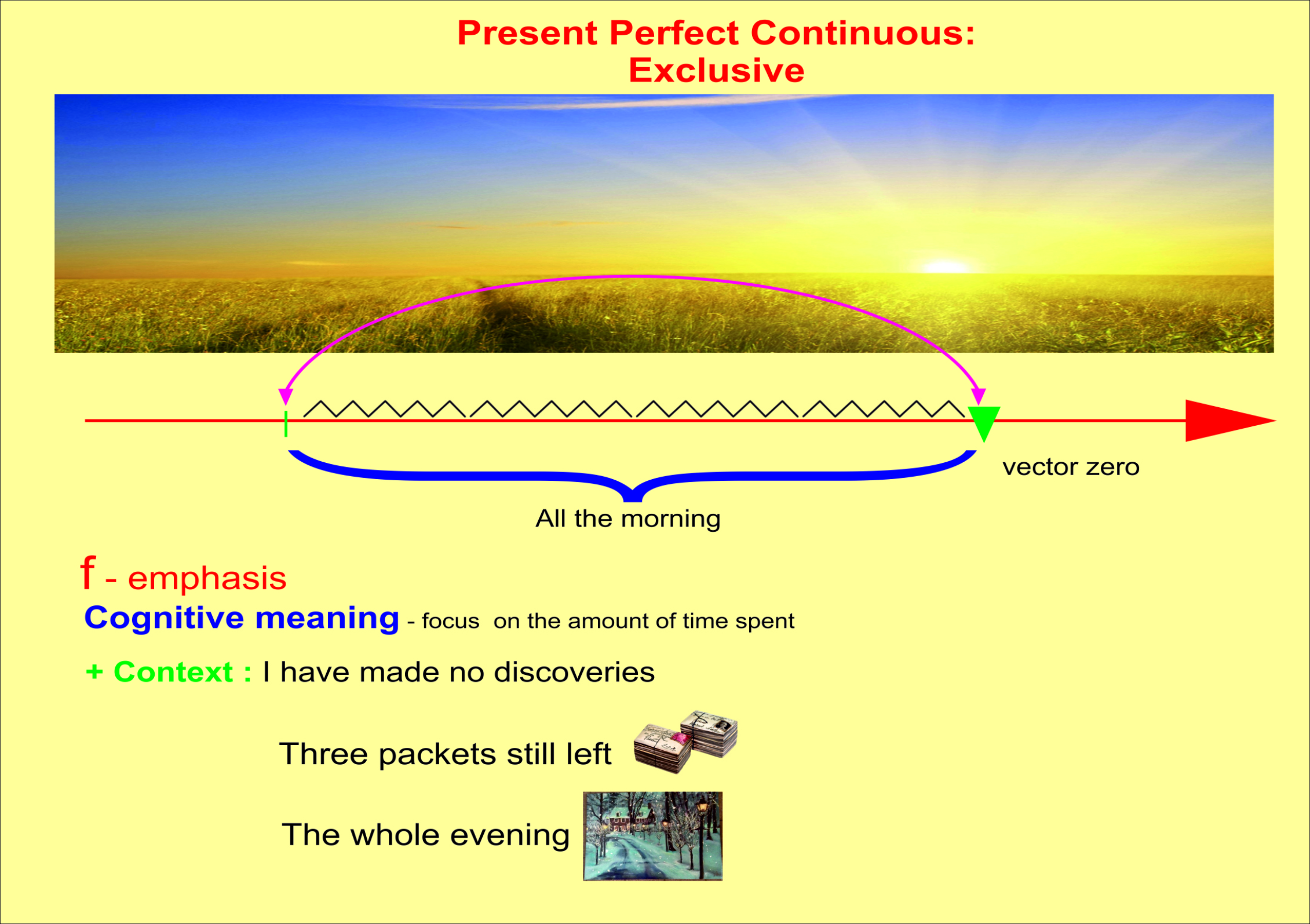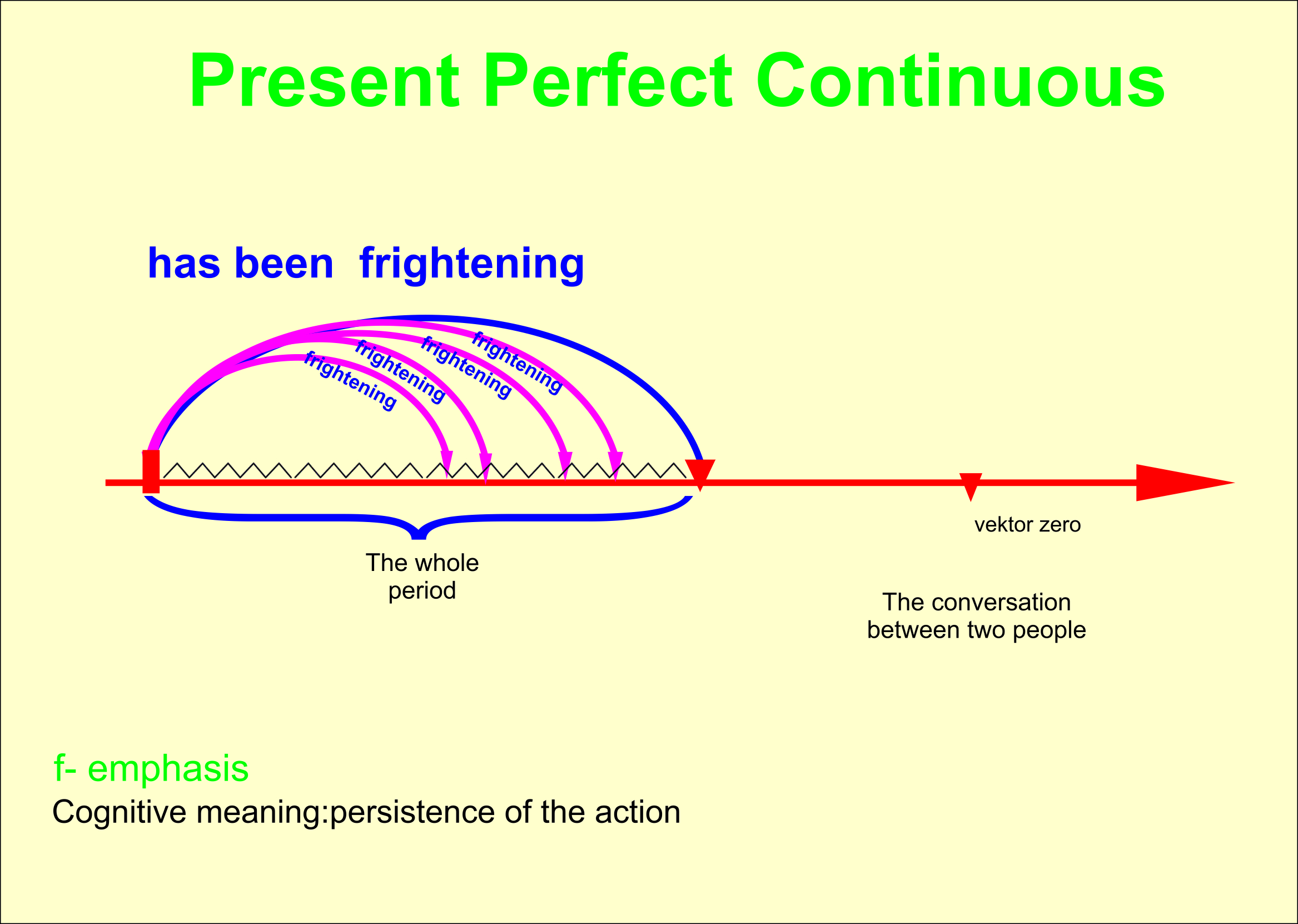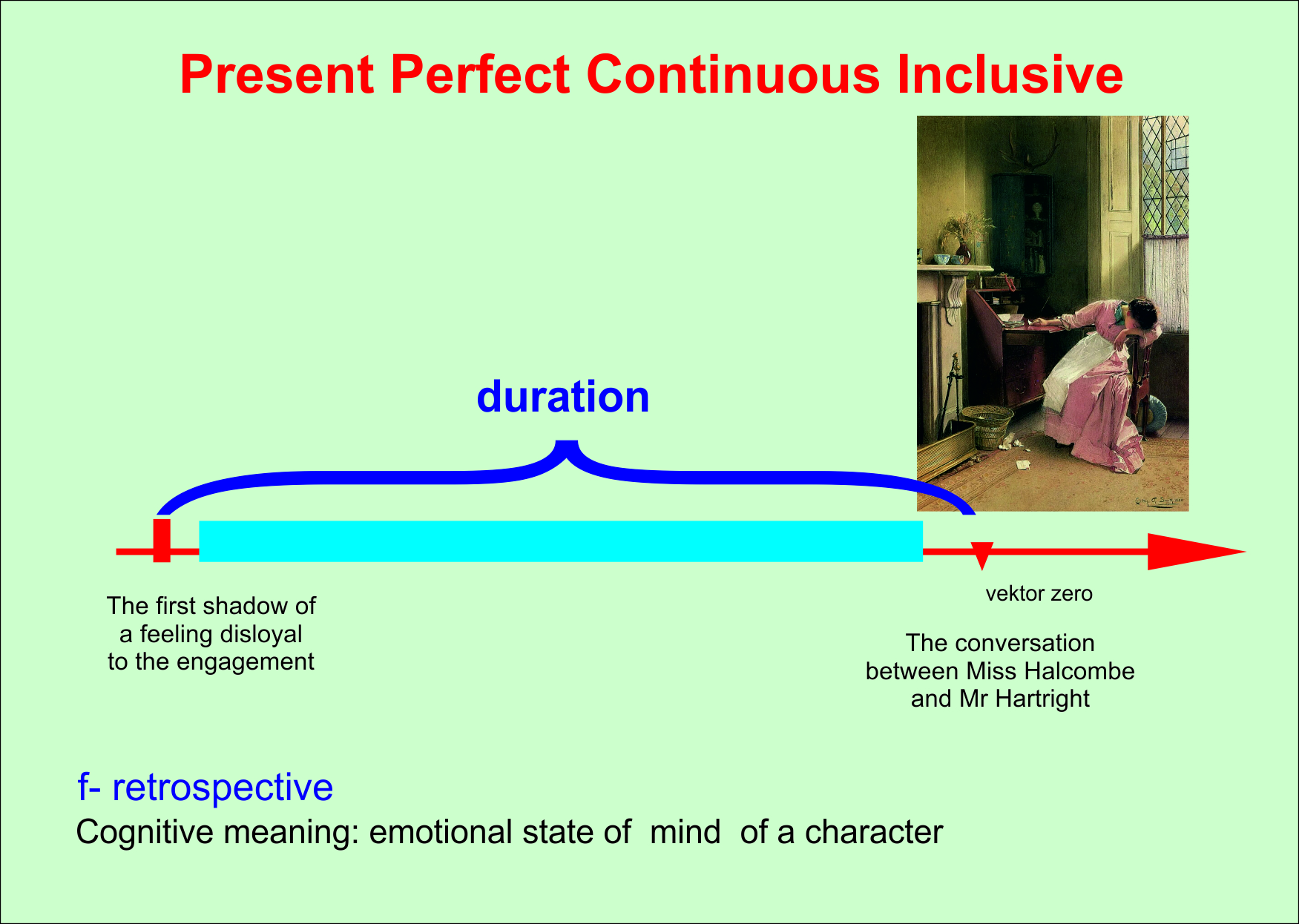Abstract
In this work, the Present Perfect Continuous tense form is subjected to analysis. The invariant cognitive meanings of this form are the perception of the consequences of actions preceding the zero vector of time orientation and the duration of the action. Depending on the correlation with the moment of speech, the form of Present Perfect Continuous can get three different meanings: exclusivity, inclusiveness, and multiplicity, but these meanings are not easily identified. Linguistic componential analysis, with the help of which grammatical meanings can be dissected into semes – the smallest and further indivisible units of meaning – shows that depending on the internal and external lexical neighbourhood, sentence structure, and contextual environment, Present Perfect Continuous can have various cognitive meanings. For example, depending on the structure of a sentence – the presence or absence of circumstantial elements – Present Perfect Continuous expresses the meaning of localisation or non-localisation of the action. Under the influence of contextual factors, Present Perfect Continuous acquires the meanings of the inclusion of vector zero and contact retrospection. Depending on the semantics of the verbs, the form takes the meaning of the recurrence of action. These meanings constitute the linguo-cognitive paradigm of the Present Perfect Continuous tense form in the English language.
Keywords: Cognitive linguisticspresent perfect continuouspolysemyexclusivityinclusivenessmultiplicity
Introduction
This work is devoted to the study of polysemy of the Present Perfect Continuous tense form. Researchers have long been interested in this problem – perfect forms are analysed in the works of Blokh ( 2008), Ilyish ( 1971), Schendels ( 1970) and contemporary linguists ( Druzhinin, 2016; Naumenko, 2017; Skrebtsova, 2018). Theoretical findings have implementation in numerous works on discourse analysis, fiction discourse stylistics and practical grammar ( Gordon & Krylova, 2004; Gurevitch, 2017; Khoren, 2016; Morozova, 2017). The cognitive approach, which the research takes, relies on the mental processes of a person, such as cognition, examining, and understanding certain phenomena. It is necessary to identify the cognitive meaning that the form of Present Perfect Continuous acquires under the influence of context and to identify how the form of Present Perfect Continuous can characterise situations and characters in fiction discourse. In this work, the cognitive meanings of Present Perfect Continuous will be revealed; the examples are borrowed from Wilkie Collins’ novel ‘The Woman in White’ (1859).
Problem Statement
The relevance of the study consists in compiling a linguo-cognitive paradigm based on the temporal-aspectual principle with the help of componential, textual, and semantic-functional methods of analysis.
Research Questions
The general hypothesis of this study is the assumption that relying on the cognitive approach it is possible to distinguish various cognitive meanings that the form of Present Perfect Continuous expresses under the influence of context. Therefore, in the study the attention is paid to perfect forms, which are the object of study, and the form of Present Perfect Continuous – the subject of the study.
Purpose of the Study
The purpose of the study is to identify and describe the realisation of the meaning of the linguo-cognitive paradigm constituents in fiction discourse (Wilkie Collins’s novel ‘The Woman in White’). For this purpose it is necessary to do the following tasks.
To classify the forms of Present Perfect Continuous according to the aspect-temporal principle.
To define compositional and stylistic functions.
To consider the linguistic components of the analysed form.
To consider the lingvo-cognitive paradigmatic meanings of the form of Present Perfect Continuous.
To consider the realization of cognitive meanings of Present Perfect Continuous in the novel ‘The Woman in White’ by Wilkie Collins.
Research Methods
The main research method of the study is the method of componential analysis, as the main meanings of the Present Perfect Continuous form – inclusive, exclusive, and multiple – are taken as the basis, and they are dissected into further smallest indivisible components – semes, namely the preceding to the vector zero of the orientation axis, contact retrospectivity of the action with respect to the vector zero of the orientation axis of the present time, duration of the action, completeness or intersection of the action, the oneness of action, the localisation of the action in time, the non-localisation of the action in time, the frequency of the action, the duration of each individual segment of the action, the intersection of each individual segment of the action, the inclusion of vector zero in the extent of the action.
Findings
Turaeva ( 2009) differentiates Present Perfect Continuous exclusive, inclusive, and multiple according to the aspect-temporal principle. The Present Perfect Continuous exclusive is characterized by the following set of semes.
Precedence to the vector zero of the orientation axis of the present.
Contact retrospective of the action with respect to the vector zero of the orientation axis of the present. This seme emphasizes the obligatory contact with the moment of speech, which can be expressed in non-fragmentation of the time perspective, in cause-effect or resultant relationships. The period between the action itself and the reference point is not defined. It is still important to maintain contact. Present Perfect Continuous is characterized by the one-dimensionality of the temporary space.
On the one hand, Present Perfect Continuous expresses a single action and we can talk about the discontinuity of the time flow; at the same time, the action expressed by Present Perfect Continuous is connected with a vector zero, with a moment in the present, and therefore, this is definitely the continuity of the time flow.
3. The duration of the action is expressed explicitly. In this form the seme of duration is the basis of the connotative meanings of emphase, an emotional expression of an element. The form of Present Perfect Continuous differs from present perfect by the realisation of the seme ‘duration of action’. It creates one-dimensionality, the continuity of the time continuum.
4. Completeness or intersection of the action.
5; The seme ‘localisation of the action in time’ is realized with the obligatory contact of the action with vector zero and depends on the contextual environment.
The non-localization of the action in time.
The above mentioned semes form the stylistic potential of Present Perfect Continuous exclusive and they are included in its paradigm.
That mysterious adventure of yours,” she said “still remains involved in its own appropriate midnight darkness. I have been all the morning looking over my mother’s letters, and I have made no discoveries yet. However, don’t despair, Mr. Hartright. This is a matter of curiosity; and you have got a woman for your ally. Under such conditions success is certain, sooner or later. The letters are not exhausted. I have three packets still left, and you may, confidently rely on my spending the whole evening over them ( Collins, 2016, p. 35).
This is part of a conversation between Marian Halcombe and Walter Hartright. The vector zero or the moment in the present is the conversation of two heroes walking across the lawn. The action of viewing letters precedes the moment of the conversation. The contact retrospective of this action is expressed by the fact that it is the main topic of the discussion of Mr Hartright and Miss Halcombe in the present, that is, the connection of the previous action with the moment of speech, which proves the continuity of the time flow. The period between the performed action ‘have been looking’ and the reference point ‘the moment of the walk’ is not defined, only maintaining the contact is important. The seme of duration of the action is expressed explicitly – ‘all the morning’. This lexical unit also emphasises the continuity of the time continuum: all morning Marian has been looking through her mother’s letters. This action is presented as completed, as it lasted until the moment of this walk. The oneness of the action is confirmed by the lack of means of expressing a repeated action. The seme of localisation of action in time is realized by indicating this whole morning. Contextual environment, namely ‘three packets still left’, ‘the whole evening’ emphasises the amount of time spent. The emphase function is supported by deliberate highlighting of the duration period – ‘all the morning’, and then ‘the whole evening’, which ensures the expressiveness of the statement. Marian has already spent all morning looking through the letters and she is ready to spend the whole evening. Based on the above analysis, the cognitive meaning of Present Perfect Continuousis the emphasis of the amount of time spent. For the purpose of a system-structural approach to the language in general and to this passage, in particular, it is possible to apply mathematical methods – namely a scheme in this particular case ( Desherieva, 2018).
The analysis can be presented in the form of a scheme (Figure

The Present Perfect multiple includes the following set of semes:
Precedence with respect to the vector zero of the orientation axis of the present. Repeating episodes or the frequency of the action occur before the vector zero, thereby creating a reverse flow of time.
Contact retrospective of the action with respect to the vector zero of the orientation axis of the present.
The multiplicity of action. While implementing this seme, it should be noted that Present Perfect Continuous multiple and present perfect multiple are not interchangeable, which can be proved by substitution: as soon as the multiplicity of action is gone, the meaning of the single completed action is obtained. Ivanova ( 1961) notes that by multiplicity, one can give processivity to a single action. Under the influence of Present Perfect Continuous multiple time has characteristics of both discontinuity, since it is possible to divide one time interval into events, and continuity, as all events are arranged in one stream, creating a continuum. For the realisation of this seme, a favorable context is needed – detailed lexical units expressing meanings of the multiplicity of the action. This very multiplicity of the action adds expressiveness, gives an additional characterisation of a character or situation.
The duration of each individual segment of action.
The intersection of each individual segment of action.
The non-localisation of action in time. It is this seme that is most often combined with the seme of multiplicity of the action.
The localisation of the action in time. The period within which the action is repeated can be localised and discrete. Discreteness can be expressed situationally. A measure of the period can be expressed by any time indicator. As Borbot’ko ( 2019) mentions, a narrative cycle can span a lifetime or just a period.

This passage presents a conversation between the school principal and Miss Hulcombe, in which he complained to Marian about a nasty boy who has been frightening the whole school. Repeated episodes of intimidation of the entire school took place before the conversation between the two characters and are relevant at the time of the conversation. This fact shows the contact retrospective of the action of intimidation of school students in relation to the moment of speech – the discussion of this incident between the principal and Marian. By replacing Present Perfect Continuous multiple with present perfect multiple, ‘has been frightening’ with ‘has frightened’ – it is clear that as soon as the multiplicity is omitted, the meaning of a single completed action is obtained. The event ‘has been frightening’ is discontinuous, as it includes a chain of sequential actions one after another; and at the same time – continuous as they line up in one stream. The analysed action is localised in time – it lasts all the time beginning from yesterday. The emphase function is manifested in the student’s persistence to scare everyone and make everyone believe in the story that he saw the ghost. Therefore, the cognitive meaning is ‘persistence of the action’. Schematically this example looks like this (Figure
The following semes are included in the lingvo-cognitive paradigm of Present Perfect Continuous inclusive.
Precedence with respect to the vector zero of the orientation axis of the present.
Contact retrospective of the action with respect to the vector zero of the orientation axis of the present.
The inclusion of the vector zero in the extent of the action.
Duration of the action. The Present Perfect Continuous inclusive form can be used with verbs that do not correlate with the meaning of procession.
The oneness of the action.
The localization of the action in time is supported by speech conditions, a reference point is indicated – either initial or final.
It should be noted that among the set of semes, there is no meaning of intersection or completeness of the action.
I, who love her better than my own life – I, who have learnt to believe in that pure, noble, innocent nature as I believe in my religion – know but too well the secret misery of self-reproach that she
In this passage, Miss Halcombe’s monologue is addressed to Mr. Hartright that mutual feelings of both the drawing teacher and his student, Laura, became noticeable. Marian fears for her sister, as she has already watched her sufferings and remorse, due to the fact that Miss Fairly is engaged. The vector zero is the moment of the conversation between Walter and Marian. Laura’s suffering began from the moment the shadow of disloyalty crept into her heart, therefore the localisation of the action in time is presented explicitly, lexically ‘since the first shadow of a feeling disloyal to her marriage engagement entered her heart’, the reference point is supported by speech conditions. This context also emphasises the process or duration of the action. A retrospective function emphasises a causal relationship. For the reason that Laura is suffering, Marian decides to speak to Mr. Hartright. The cognitive meaning is the emotional state of mind of the hero (Figure

Conclusion
In this article the Present Perfect Continuous tense form is analysed. The invariant meaning of this form is the precedence of a continuous action with respect to the vector zero of the orientation axis of the present time with the obligatory contact retrospective of the action or the period to the vector zero. Depending on the correlation with the moment of speech, the form of Present Perfect Continuous can express three meanings: exclusivity, inclusiveness and multiplicity. But these meanings are not immediately identified. Componential analysis shows that depending on the internal and external lexical conditionality, the structure of the sentence and the contextual environment of present perfect continuous, it can acquire various cognitive meanings which are realised differently depending on the context. Thus, the goal of our study is achieved and the hypothesis is confirmed.
References
- Blokh, M. Y. (2008). A Course in Theoretical English Grammar. Vyshaya shkola.
- Borbot’ko, V. G. (2019). Printsipy formirovania discursa ot psikholingvistiki k lingvosinergetiki [The principles of discourse formation: From psycholinguistics to lingvosynergetics]. Librokom.
- Collins, W. (2016). The Woman in White. Pantianos Classics.
- Desherieva, T. I. (2018). Lingvistika i matematika [Linguistics and Mathematics]. Lenand.
- Druzhinin, A. S. (2016). Cognitive Interpretation of English Perfect Aspect-Tense Forms. International Research Journal, 6-4 (48), 27-29.
- Gordon, E. M., & Krylova, I. P. (2004). Grammar of Modern English. KDU.
- Gurevitch, V. V. (2017). Practical grammar of the English language: exercises and comments. Retrieved January 15, 2020, from http://biblioclub.ru/index.php?page=book&id=103487
- Ilyish, B. (1971). The Structure of Modern English. Prosvescheniye.
- Ivanova, I. P. (1961). Vid I vremya v sovremennom angliyskom yazyke [Form and Tense in Modern English].
- Khoren, R. V. (2016). English Grammar Practice. Retrieved January 15, 2020, from http://biblioclub.ru/index.php?page=book&id=463612
- Morozova, E. N. (2017). The English language. Retrieved January 15, 2020, from http://biblioclub.ru/index.php?page=book&id=483739
- Naumenko, M. G. (2017). Theoretical Grammar of the English Language. Retrieved January 15, 2020, from http://biblioclub.ru/index.php?page=book&id=499883
- Schendels, E. (1970). Mnogoznachnost’ i sinonimiya v grammatike [Polysemy and Synonymy in Grammar]. Vyshaya shkola.
- Skrebtsova, T. G. (2018). Cognitive linguistics: classical theories, new approaches. Retrieved January 15, 2020, from http://biblioclub.ru/index.php?page=book&id=498560
- Turaeva, Z. Ya. (2009). Kategoria vremeni. Vremya grammaticheskoe i khudozhestvennoe. [The category of time. Grammatical and fiction time]. Librokom.
Copyright information

This work is licensed under a Creative Commons Attribution-NonCommercial-NoDerivatives 4.0 International License.
About this article
Publication Date
03 August 2020
Article Doi
eBook ISBN
978-1-80296-085-3
Publisher
European Publisher
Volume
86
Print ISBN (optional)
-
Edition Number
1st Edition
Pages
1-1623
Subjects
Sociolinguistics, linguistics, semantics, discourse analysis, translation, interpretation
Cite this article as:
Ivanova, A. A., Shiryaeva, A. S., & Zajchenko, S. S. (2020). The Realisation Of Lingvo-Cognitive Paradigm Constituents Of Present Perfect Continuousforms. In N. L. Amiryanovna (Ed.), Word, Utterance, Text: Cognitive, Pragmatic and Cultural Aspects, vol 86. European Proceedings of Social and Behavioural Sciences (pp. 521-528). European Publisher. https://doi.org/10.15405/epsbs.2020.08.62

